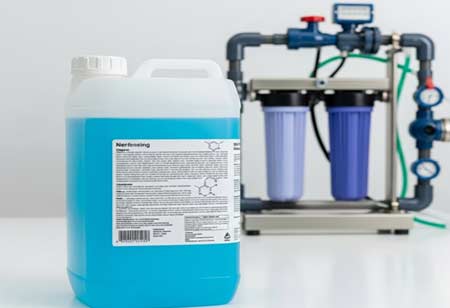Fremont, CA: Water treatment is indeed one of the critical sectors of global infrastructure supporting all municipal supply systems and industrial processes. Chemical additives have long been at the heart of purifying and conditioning water. This industry is now shifting toward sustainability due to stricter environmental regulations, increasing operational costs, and recent trends concerning sustainability. The newer technologies are not merely redefining the use of water treatment chemicals; atmospheric water purifications are being radically changed. The innovations result in shared, brighter, cleaner, and more efficient solutions.
Smart Dosing and Real-Time App Monitoring
Arguably, the most far-reaching development, where the science of water treatment chemistry meets innovative technology, is in innovative dosing systems. It uses sensor technologies and real-time data analytics for a very minute expression of what a water system needs regarding chemicals at specific intervals. Unlike today, where most dosing usually relies on fixed schedules or estimates, innovative systems base their adjustment of chemical inputs on dynamic variations in pH, turbidity, and flow rate. Indeed, accuracy means confined chemical use, better treatment, and reduced expenses. Accuracy in chemical utilization also translates to operational efficiency in ensuring environmental compliance.
Advanced Oxidation and Green Chemistry Options
Sometimes, addition-by-products of conventional chemical treatments still find themselves harmful to health or need secondary treatment. Hence, green alternatives in chemistry are being innovated to degrade contaminants without leaving residual toxicity. An example would be the advanced oxidation process (AOP), which destroys organic pollutants down to the molecular level through combinations of ultraviolet light, ozone, and hydrogen peroxide. Such methods provide high degrees of disinfection and purification while reducing heavy reliance on harsh chemicals. Biodegradable coagulants and natural polymers, which can replace synthetic agents, are also explored to align water treatment with the goals of ecological sustainability.
Nanotechnology and Functional Materials
Nanotechnology is opening doors in water treatment modes, improving the efficiency of chemicals or additives and enhancing the performance of filtration media. Engineered nanoparticles targeting specific contaminants, such as heavy metals, pathogens, and organic toxins, could provide excellent selectivity and efficiency in treatment. These materials could be embedded into membranes, resins, or catalytic surfaces to improve reactivity and lifespan. High surface area and unique properties allow these materials to achieve better results with less chemical consumption—especially in complex or high-load water systems. With continued advancements in studies, nanotech-based chemicals will rapidly take over household and industrial applications.
This world promises to be precise, sustainable, and technological in the future of the water treatment chemical industry. More intelligent systems, greener alternatives, and nanomaterials would redefine the efficiency level in treatment and best practices for the sector. Once matured, these technologies will deliver cleaner water with fewer environmental trade-offs, helping industries and communities respond to changing world challenges while preserving one of its most important resources.

